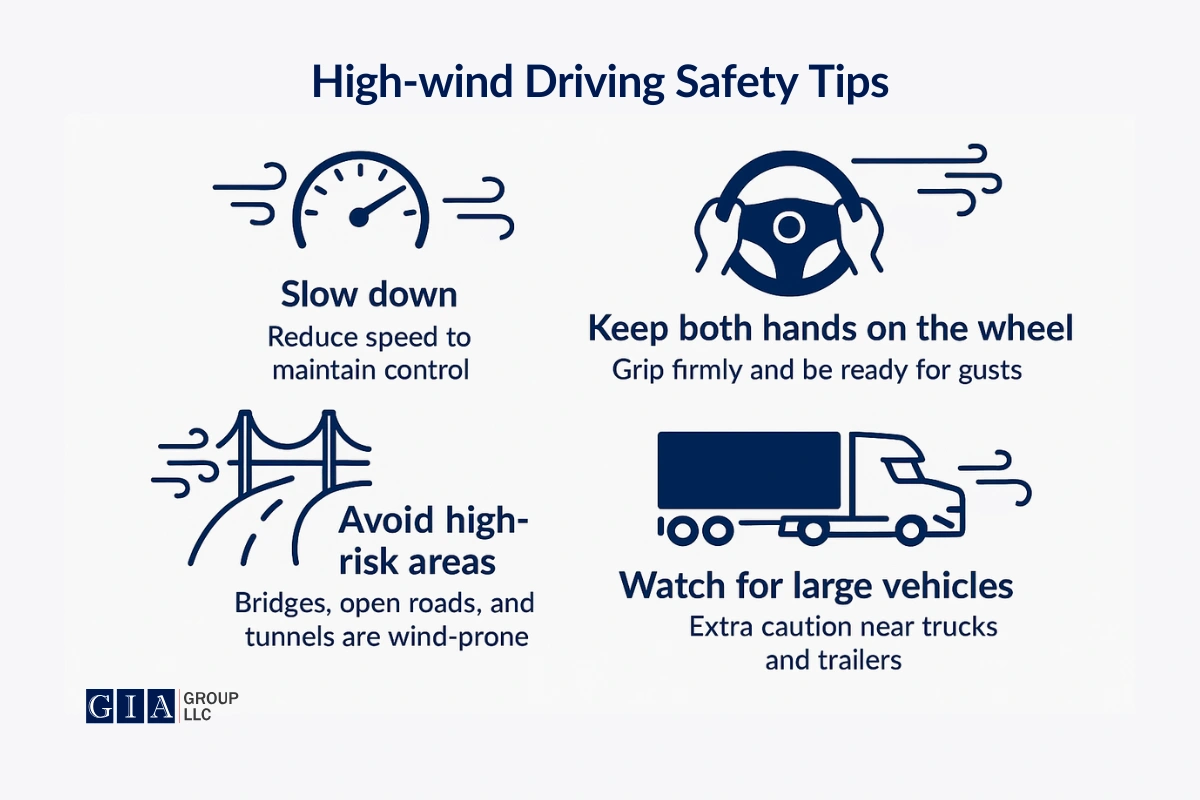Driving under high winds is particularly dangerous for truck drivers. Though most people think that operating a semi truck in strong winds is not as hazardous as driving in snow and ice, the truth is that all of these weather conditions are equally dangerous. It is essential to take special safety measures, as driving calls for great awareness.
Operating a large commercial vehicle involves unique challenges and responsibilities, especially in adverse weather. The United States Department of Transportation estimates that around 21% of all auto accidents that occur nationwide are weather-related.

Every year, these mishaps cause about 5,400 deaths and 418,000 injuries. Of these fatalities, 82% are not drivers or passengers of a truck. Every motorist, especially a truck driver, has an extra safety responsibility to protect themselves and others while they are on the road. Following these safety tips for driving in strong winds helps truck drivers make sure everyone gets to their destination without incidents.
How to drive in high winds?
1. Plan Ahead
If you know it is windy, give yourself more time for your trip. Don’t rush, as you will have to drive slower than normal to remain safe. Arriving somewhat late is preferable to risking your life in hazardous driving conditions. Before you go, consider consulting the weather forecast and organizing your route to avoid blustery regions like mountain passes or bridges.
2. Always Wear a Seatbelt
This one might seem obvious, but it’s crucial to always buckle up. In windy conditions, your vehicle could suddenly move or even tip over. Your seatbelt keeps you safely in your seat and could save your life if something unexpected happens. Make it a habit to put it on before you even start the engine.
3. Slow Down
Strong winds mean you need to slow down. It’s that simple. If dust or rain is making it hard to see, turn on your headlights. You will have more control over your vehicle and more time to react if anything happens. Just remember—the dangers of speeding far outweigh the benefits of arriving a few minutes early. It’s always safer to take your time and ensure everyone gets to their destination in one piece.
4. Keep Your Hands Firmly on the Wheel
Keep both hands tightly on the steering wheel. This is quite crucial since the wind might force your vehicle sideways from a protected area into an unprotected area. Having both hands on the wheel will enable you to correct any unexpected motion.
5. Maintain a Safe Distance
Leave plenty of room between your vehicle and other cars, especially large vehicles like trucks, RVs, or trailers being towed. Strong gusts can force these vehicles to swing. Doubling your usual following distance in windy weather is a solid rule.
6. Take Extra Care in a High-Profile Vehicle
If you are driving a tall vehicle like a van, truck, or SUV, or pulling a trailer, be extra careful. These vehicles catch more wind and can be pushed or flipped by high winds more easily. Consider waiting out really strong winds.
7. Watch for Objects That Could Blow into the Roadway
Keep your eyes wide open for things that might get blown onto the road. Tree branches are common, but also watch for trash, construction materials, or any loose items that could suddenly appear in front of you. Look far ahead so you have time to react safely.
8. Listen to the Radio
Keep your radio on and tuned to a local station. They usually announce any important weather changes or warnings. This helps you know if conditions are getting worse and if you should consider stopping somewhere safe.
9. Pull Over if Necessary
If the wind is so strong that you are struggling to control your vehicle, it is time to stop. Find a safe place to park away from things that could fall on your vehicle, like trees or tall objects. Parking lots in buildings can be a good shelter from strong winds.
10. Avoid Downed Power Lines
Never drive over fallen power lines. They could still be alive and very dangerous. Stay away from anything touching these lines, even if it looks safe. Call the local utility center and the police to report them, and find another route.
11. Use Lower Gears and Hazard Lights
In strong winds, using a lower gear gives you better control as your engine helps keep your speed steady. Put your hazard lights on if you need to drive much slower than normal; this will alert other drivers that you are dealing with hazardous conditions. Remember to turn off your hazard lights when windy conditions improve.
12. Ensure Secure Doors and Cargo
Before driving in windy conditions, double-check that all doors are properly closed and locked. If you are carrying any cargo, make sure it is tied down well. A loose door or shifting load in high winds can cause serious accidents.
Summary
Driving in heavy winds is about arriving safely. These recommendations could stop a major accident, even if they might cause your trip to take a little longer. Although strong winds might be erratic and difficult, keeping calm and following these safety guidelines will enable you to manage whatever the weather brings.
Having a proactive instead of a reactive attitude to dealing with windy weather makes a lot of difference. Trust your gut feeling if you ever doubt whether it is safe to keep driving. Pulling over and waiting for conditions to clear is usually the best decision you can make.
